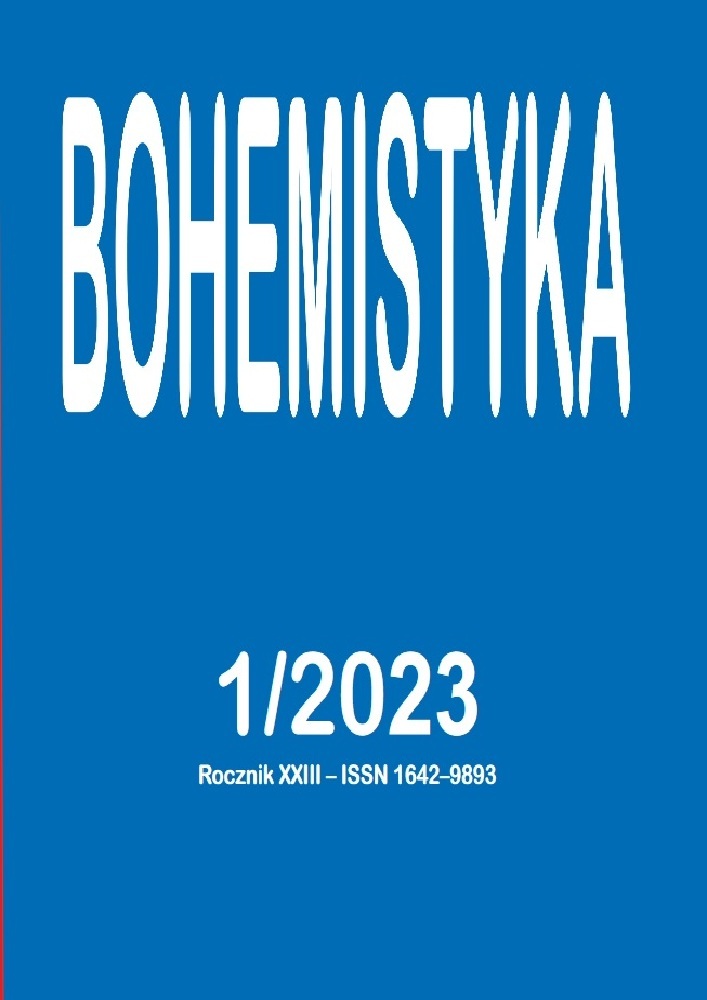Abstrakt
The aim of this paper is to illustrate through two sentences how foreign learners perceive the structure of the Czech language. Respondents were asked to write answers on how the language works, what the syntactic relations of the sentence members are, and why the chosen words have their concrete forms with respect to the whole clause. The survey collected answers of a wide range of respondents with respect to both the number of years of studying the Czech language and their native language. After a brief introduction to the Czech language focusing mainly on the syntactic and morphological properties that were at the center of attention in this survey, the chosen survey questions are analyzed. It turned out that learners of the Czech language were willing to participate in this survey; in total the respondents provided answers in 95.7 % of cases, which helped to get more exact results. It emerged that respondents of the survey fully answered the questions correctly in 52.7 % of cases. The remaining 47.3 % of responses were either wrong or incomplete depending on the form of the question. The results of this survey lead us to the conclusion that it might be worth focusing more on the system of morphology and syntax while teaching Czech for foreigners. The complete list of answers with respect to the number of years of studying the Czech language is attached in the appendix.
Finansowanie
The article was funded by MŠMT ČR and awarded by UP in Olomouc (IGA_FF_2021_027).
Bibliografia
Boccou Kestřánková, Marie, Štěpánková, Dagmar, Vodičková Kateřina. 2017. Čeština pro cizince – cvičebnice: úroveň A1 a A2. Brno: Edika.
Comrie, Bernard. 1981. Language Universals and Linguistic Typology: Syntax and Morphology. Oxford: Blackwell.
Daneš, František, Hlavsa, Zdeněk, Grepl, Miroslav. 1987. Mluvnice češtiny. Praha: Academia.
Grepl, Miroslav, Karlík, Petr. 1998. Skladba češtiny. Olomouc: Votobia.
Havránek, Bohuslav, Jedlička, Alois. 2002. Stručná mluvnice česká. Praha: Fortuna.
Holá, Lída. 2016. Česky krok za krokem: Czech step by step : appendix : A1–A2. Praha: Akropolis.
Horáková, Jitka, Kopečková, Michaela, Nováková, Eva, Poláchová, Pavla. 2021. Slovník českých vidových dvojic pro cizince. Olomouc: Univerzita Palackého v Olomouci.
Huddleston, Rodney, Pullum, Geoffrey K. 2005. A Student’s Introduction to English Grammar. Cambridge: Cambridge University Press. DOI: https://doi.org/10.1017/CBO9780511815515
Karlík, Petr, Nekula, Marek, Rusínová, Zdenka, Grepl, Miroslav. 2012. Příruční mluvnice češtiny. Praha: Nakladatelství Lidové noviny.
Karlík, Petr, Nekula, Marek, Pleskalová, Jana. 2012–2018. Nový ency- klopedický slovník češtiny. Brno: Masarykova univerzita. Available at: https://www.czechency.org/ [cit. 2021-12-10].
Komárek, Miroslav, Kořenský, Jan, Petr, Jan, Veselková, Jarmila. 1986. Mluvnice češtiny. Praha: Academia.
Křížková, Helena. 1966. Příslovečné určení s významem časové míry ve spojení s dokonavými slovesy. Naše řeč, pp. 65–72. Available at: ttp://nase-rec.ujc. cas.cz/archiv.php?art=5181 [cit. 2021-12-12].
Macháčková, Eva, Daneš František, Svozilová Naďa, Hlavsa Zdeněk, Prouzová Hana, Jirsová Anna. 1987. Větné vzorce v češtině. Praha: Academia.
Šmilauer, Vladimír. 1980. Nauka o českém jazyku. Praha: Státní pedagogické nakladatelství.
Licencja
Prawa autorskie (c) 2023 Tereza Koudelíková

Utwór dostępny jest na licencji Creative Commons Uznanie autorstwa – Użycie niekomercyjne – Bez utworów zależnych 4.0 Międzynarodowe.





